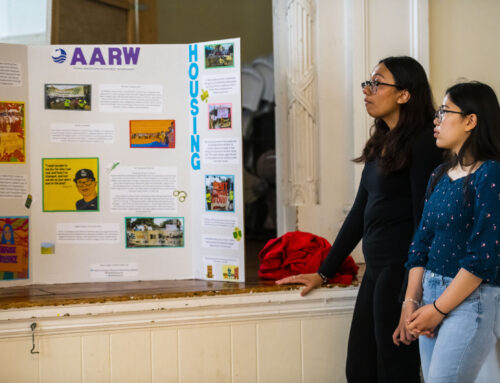I live by instruction manuals. Step-by-step directions for how to prepare a curry dish or — better yet — a video of a chef explaining the steps of a recipe. I like having concrete steps, tangible directions, and instructions to lie back on in case of a detour while cooking. That’s why the exterior of my refrigerator has become a mosaic of half-torn, brightly colored post-it notes detailing ingredient quantities and steps to Indian recipes. I jot these notes down while observing my mother as she cooks from memory, from natural instinct and impulse. She relies on how fragrant the air is, how tender the rice feels to the finger, rather than ambiguous time frames indicated by cookbook authors. For me, however, cooking has always been about precision and consistency; so, I’ve observed and studied Mother making certain dishes multiple times, examining her slight motions: the way she tilts pans to deglaze the sticky spice residue before plating and taking note of how her body moves like a delicate wave as she stirs the contents in the pot.
A few months back, I attempted to make my mother’s version of Pav bhaji, an Indian sloppy joe brightened with raw red onions and fresh lime juice. I brushed my fingers over the oil-stained sticky notes onto which I jotted my observations down for this recipe. The steps were clean and direct, simplifying the calculus of cooking down to a few, tightly wound sentences. I checked our storage baskets and pantry before choosing this recipe — making sure that I had ingredients on hand before hurling myself into an evening of cooking.
With my grandparents resting in the room next to the kitchen, I quietly tied my apron in a messy bow and began organizing the potatoes, cauliflower, and spices in distinct piles next to the stove. Though I tried obeying my sticky notes’ exact steps, I eased my rules and slipped in a few taste-tests as I coated the potatoes in a sticky, spicy sauce. I felt in touch with the ingredients as I bent forwards with the stirring spoon and released the tension that was locked in my spine. After, I eagerly dunked the potatoes in the pot of hot oil, watching the starchy cubes dance sporadically and release their flavor into the curry.
But, no manual or recipe ever predicted the occurrence of a pandemic that would reveal the instability of our food production and distribution system. With the global lockdown, it was no longer possible to access certain foods or share meals with loved ones. The past few months have undoubtedly altered the way I approach food, cooking, and mealtimes — and in some ways, for the better. I rely less on recipes, transform leftovers into main courses, and improvise with what I have on hand a bit more. Though my family and I have embraced new meal ideas and flexibility with ingredient shortages, the vulnerability in our nation’s food supply system has become shockingly apparent.
Across continents, farmers are dumping seasonal harvests due to a lack of demand by restaurants, schools, and workplaces. Meat processing plants in the United States have shut down due to COVID-19 concerns, and, as a result, laborers and farmers are banned from traveling to and working on farms. In addition to such production concerns, the issue of affordability likewise arises and exacerbates the problem at hand. With the collapse of the global economy and skyrocketing unemployment rates, millions of families are struggling to put food on the table every day. And, with many schools no longer operating for in-person instruction, over 368 million children have lost nutritious meals. The issue here is not with food shortage, but more so with food production and distribution. While global food suppliers remain abundant, the question of whether food can be harvested and transported to the right places in time remains.
The effects of the pandemic have exposed the already bleeding wounds of the global food system. Logistical problems in planning, organizing, and distributing food will leave those in underprivileged communities deprived, as operations in developed nations are mainly organized and automated, according to Johann Swennen, director of the International Food Policy Research Institution in Washington. Uncertainty over food is accelerating as daily-wage workers find their jobs dried up and income sources lost.
COVID-19 has only exposed the intertwined vulnerabilities in our global food system which have been present for decades. For years, the food supply system has been breaking and will continue to break as food insecurity grows. Though devastating, the impacts of the pandemic can fuel leaders and communities to invest in healthier, climate-resilient, and equitable agricultural practices.
As this global pandemic eases, and little by little, the world opens back up, I look forward to cooking with familiar ingredients and restocking my pantry with foods I’ve missed. However, we must not mistake the resurgence of food in supermarkets, as a mark of resilience in our global food production system; we must not wait for step-by-step recipes and instruction manuals to tell us how to act next. Rather, we have a collective responsibility and must reflect on inequalities inherent in our food systems — for both workers and consumers — and intentionally design for better access for all people to the food they need.




